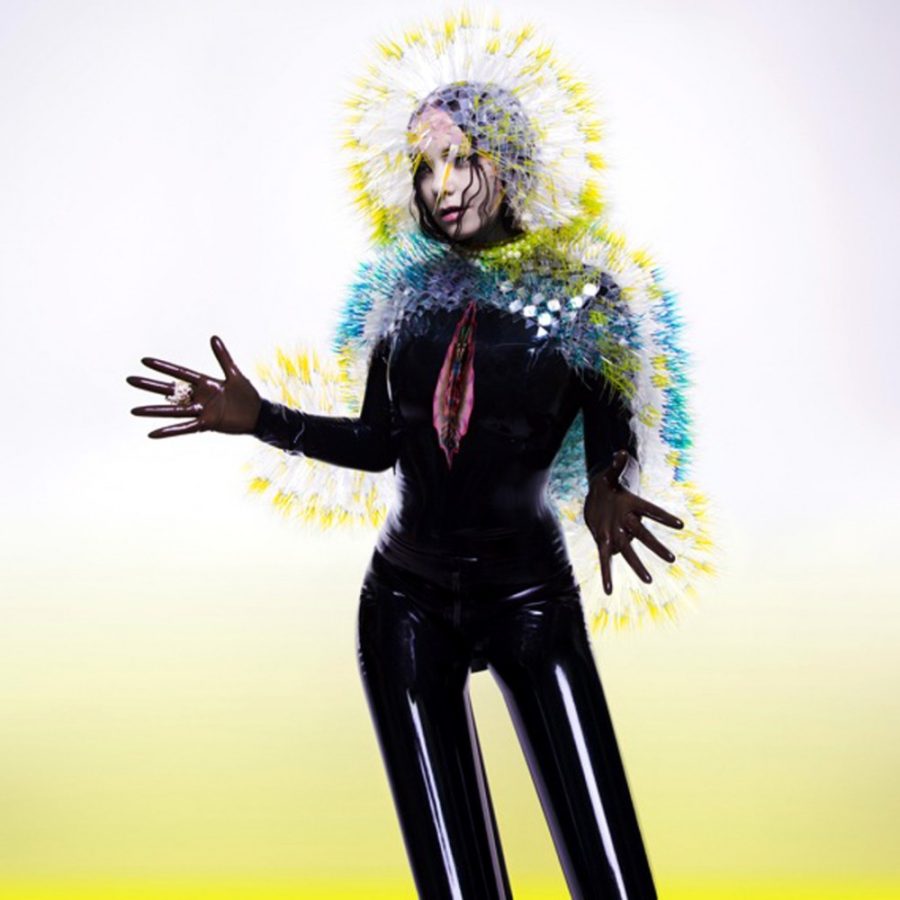On her ninth and most personal studio album, Vulnicura, Icelandic avant-garde musician Björk reflects on the different stages of her breakup in an almost clinical approach. The album was rush-released on Jan. 20 due to its leak on the internet on Jan. 18, just one week after the announcement of its initial release date in March.
The singer documents her breakup with American artist Matthew Barney chronologically from the slowly creeping foreboding of nine months prior to slowly finding a new ground eleven months post-split. Asserting on her website how biological of a process a breakup is, Björk analyzes the growing distance between her and her lover in a sharp, bittersweet way through the use of lovely metaphors, sounds of nature and chamber pop.
Starting Vulnicura off with the soft howling of the wind and hesitant strings, “Stonemilker” symbolizes a storm brewing nine months before her breakup. Björk sings about her longing to be shown “emotional respect” and to finding a “mutual coordinate” with her lover in order to strengthen their relationship. It marks stage zero of their breakup, the beginning of rough waters.
In “Lionsong,” Björk wonders whether her lover will snap out of whatever is going through his head and whether their relationship can survive his emotional distance. The theatrical song embeds a trip hop beat in a mass of strings. “History of Touches” feels like a painful remembrance of Björk’s physical relationship with her lover. Expressing her bitterness, Björk goes as far as dropping the f-word, a thing she rarely does.
According to the album’s booklet, “Black Lake” shows a wounded Björk two months after the breakup. Her grief is apparent through changing dynamics and a changing pace. In this epic 10-minute piece, she accuses her ex-lover of abandoning their daughter, who likely suffered from their breakup. Björk’s hopelessness — “No hope in sight of ever recover/ Eternal pain and horrors” — marks the first stage after the breakup, the mourning of what they had. “Family” extends this motif. Björk mourns the end of their “triangle” of love. Though “Notget,” written 11 months after the breakup with Barney, shows Björk still wounded and lost, “Atom Dance” shows her slowly “dancing towards transformation” to the second stage: healing. The collaboration with transgender musician Antony Hegarty of Antony and the Johnsons revisits trip hop and offers stronger percussion.
“Mouth Mantra” shows Björk as stronger and less vulnerable. The track has a more aggressive pace and thicker vocals and has Björk reflecting the negative sides of her lost relationship. It slowly builds up and gets to epic heights at its climax. Björk now refers to the relationship in the past tense. Though the song was written back in 2011 during more hardships when Björk’s mother was in and out of hospitals, “Quicksand” closes the album by showing the musician gain a new perspective.
She now feels that she has to be strong for her daughter, just like her mother had to be strong for her. “Every time you give up / You take away our future / and my continuity and my daughter’s.”
The rush-release of Vulnicura might have been an important step in Björk’s career. Though the book “Björk: Archives” and an upcoming exhibition at the Museum of Modern Art were supposed to accompany the release of the album, the rush-release let the light shine purely on the album. The positive reception of the album by both critics and fans emphasizes that Vulnicura, with its hauntingly personal lyrics and unique concept, is able to stand for itself.
_______________
Follow Caren Badtke on Twitter.









